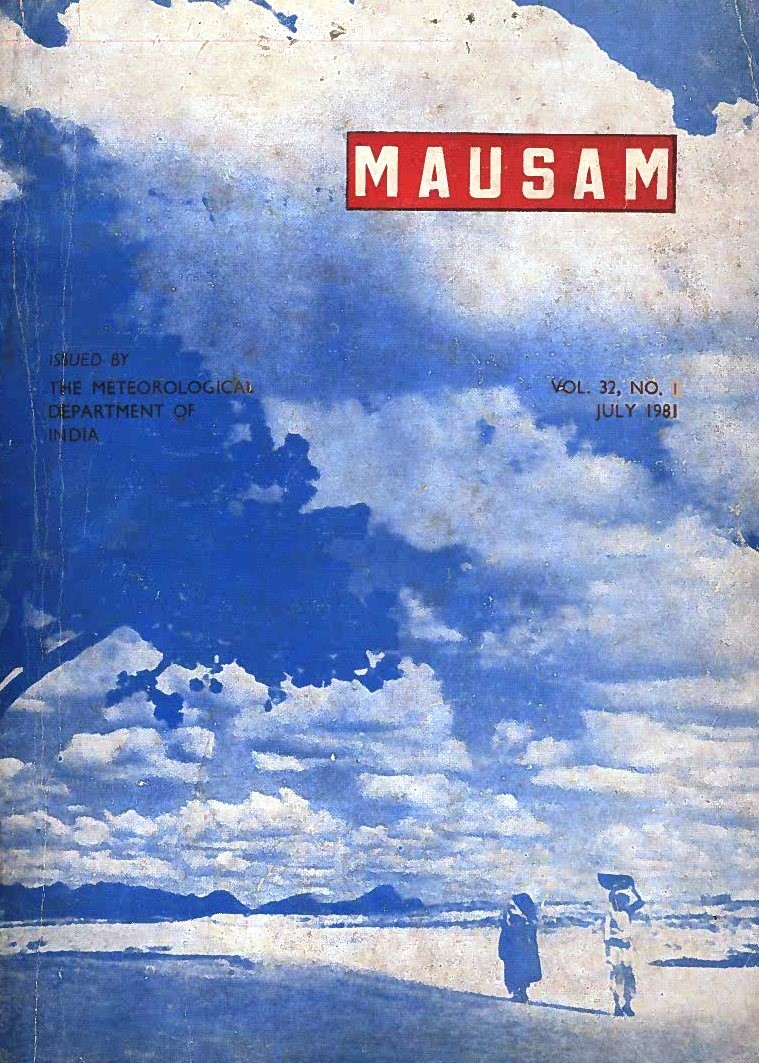The vertical slope of the monsoon trough and its association with distribution of rainfall over India
DOI:
https://doi.org/10.54302/mausam.v32i1.3436Abstract
By evaluating the Margules' simplified equation for the slope of a surface of airmass discontinuity with relevant data and comparing the computed slope with observations, it has been suggested that, to a high degree of approximation, the monsoon trough over India may be regarded as a surface of airmass discontinuity separating the relatively warm easterly winds in the north from the cool westerly winds in the south and sloping southward with height. Rainfall associated with the normal southward slope of the trough appears to be distributed mainly to the south of the MSL position of the trough. However, both the slope of the trough as well as the distribution of rainfall associated with it are found to undergo major changes when synoptic disturbances such as the Bay of Bengal depressions or western disturbances affect India. Some main patterns of these changes are identified and discussed with reference to the possible role of the synoptic disturbances.
Downloads
Published
How to Cite
Issue
Section
License
Copyright (c) 2021 MAUSAM

This work is licensed under a Creative Commons Attribution-NonCommercial 4.0 International License.
All articles published by MAUSAM are licensed under the Creative Commons Attribution 4.0 International License. This permits anyone.
Anyone is free:
- To Share - to copy, distribute and transmit the work
- To Remix - to adapt the work.
Under the following conditions:
- Share - copy and redistribute the material in any medium or format
- Adapt - remix, transform, and build upon the material for any purpose, even
commercially.



